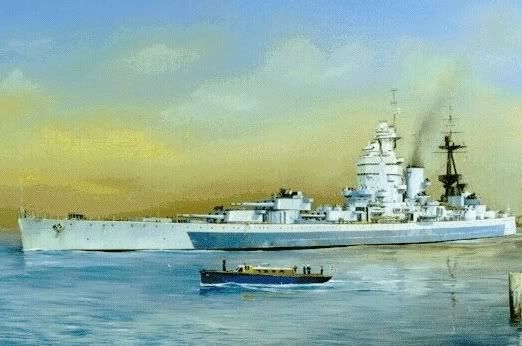The two Gneisenau-class battlecruisers were followed by the two Bismarck-class battleships. These were designed and built with commendable speed on the basis of theoretical work which German naval architects had completed during the period in which Germany was prohibited from the construction of warships displacing more than 10,000 tons, but reflected the fact that Germany was short of practical experience in the design, construction and use of modern battleships. The most important aspect of this limitation was that the basic hull concept of the WWI Baden-class was reused, albeit in a more refined form with a greater length/beam ratio to allow a higher speed. Considerable development of the basic hull allowed the incorporation of much improved underwater protection and a considerably enhanced armament fit, which now comprised a main battery of eight 15 inch (380 mm) main guns in two pairs of superfiring twin turrets, a secondary battery of twelve 5.9 inch (150 mm) guns in six twin turrets, and a tertiary battery of sixteen 4.1 inch (105 mm) anti-aircraft guns in eight twin turrets complemented by large numbers of 37 and 20 mm cannon wherever deck space could be found; but the basic obsolescence of the hull was evident in the poor protection provided for the rudders and associated steering gear, the location of the main armoured deck toward the bottom edge of the armoured belt at a time when other countries, drawing on experience in the destruction of older battleships (including German ships surrendered at the end of World War I), had moved this to a position farther up the belt to provide better protection for communications and data transmission systems. Both of these faults played a decisive part in the eventual loss of the Bismarck. Three other weak points were the provision of of seperate low-angle secondary and high-angle tertiary batteries, making extensive demands on deck area and displacement, as a result of Germany's failure to keep abreast of the latest developments in dual-pupose ship's armament, the indifferent quality of armour that was designed to be proof against penetration by 15 inch (380 mm) fire in its key areas but was in fact penetrated by 8 inch (203 mm) fire, and the poor quality of the 15 inch (380 mm) shells, which often failed to detonate.

